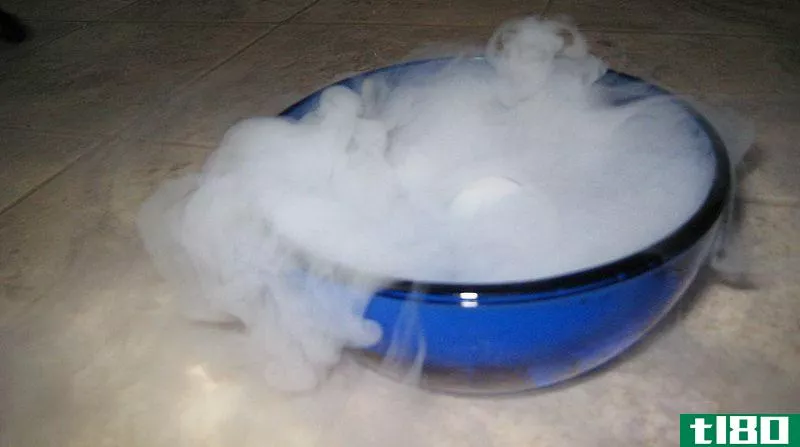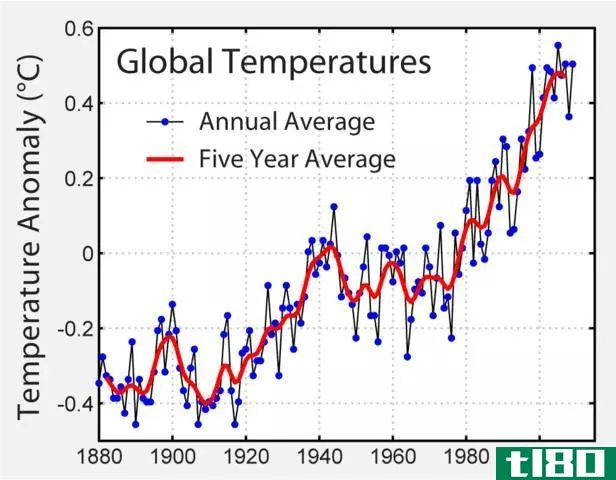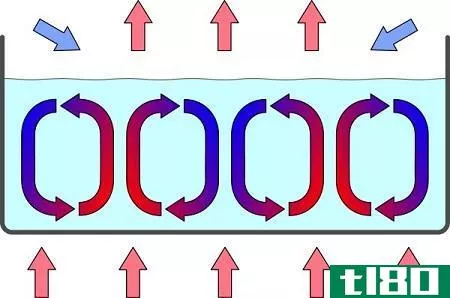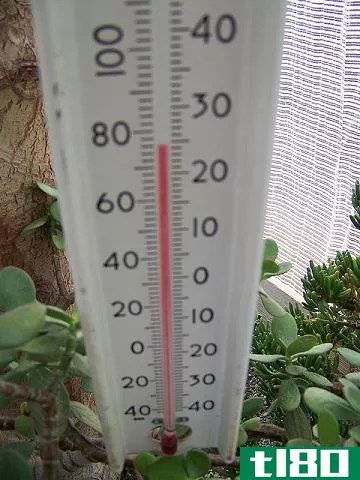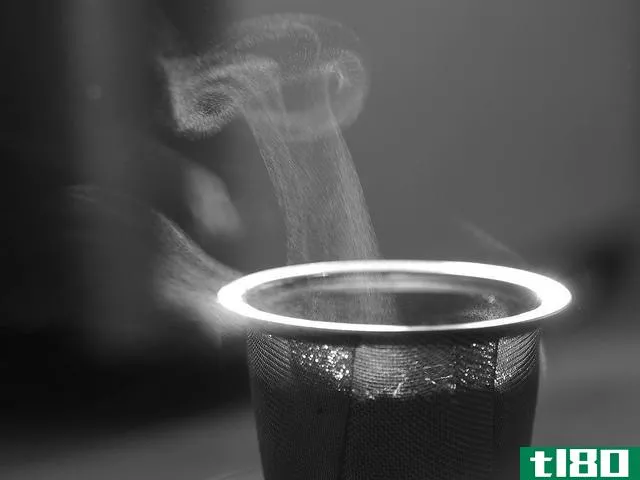热(heat)和温度(temperature)的区别
热量与温度
如果我们粗略地考察一下物质世界,就会发现热量和温度是一样的。例如,当你打开一个烤箱,你会说它热了。同时温度升高。对于这种一般用途,很容易混淆热量和温度。然而,当你在物理领域工作时,热和温度之间有许多不同。
热量的测量单位是焦耳。焦耳代表热量传递的能量。瓦特测量这种能量转移的速率。瓦特等于焦耳(秒)。温度是用各种刻度来测量的。最常见的三种刻度是开尔文、摄氏度和华氏度。开尔文是以绝对零度概念为基础的一种主要的科学尺度。摄氏度在世界各地被用来测量科学和消费者的温度。华氏度的使用仅限于美国和其他一些小国。
它所测量的“热量”测量的是特定物质中的所有能量。这包括分子运动产生的动能以及分子键中储存的势能。热被认为是一种不断运动的能量形式,“温度”只测量运动分子释放的动能。
热和温度都受热力学定律控制。这些定律表明,自然界不断地试图在一个封闭的系统,在这种情况下,宇宙中均匀地分配所有的能量。你可以把能量想象成一条不断向下流动的溪流,从一个池子流到另一个池子,直到它们都被均匀填满。
自然界传递能量有两种方式。她可以用功也可以用热。热的最简单定义之一是能量从一个物体传递到另一个物体。如果把一个温度较高的物体放在一个温度较低的物体旁边,能量就会从较热的物体流出,流入较冷的物体,直到它们达到平衡。这种现象是可以观察到的,当你看着你的热食物冷却到室温或一支笔热起来,你拿在手里的时间越长。
能量作为热量的传递与温度有关,因为当热量从一个物体传递到另一个物体时,物体中接受热量的分子会加速,从而增加物体中的动能。动能越大,温度就越高。
摘要1.对于偶然观察者来说,热和温度是指物体变热的同一现象。2.热和温度是用不同的单位测量的。3.温度测量物体中分子的运动,而热测量分子的运动和分子的势能。4.热和温度由热力学定律和热力学定律共同作用,使能量从较热的物体流向较冷的物体。
- 发表于 2021-06-22 12:18
- 阅读 ( 223 )
- 分类:物理
你可能感兴趣的文章
生成热(heat of formation)和反应热(heat of reaction)的区别
...值。我们将这些术语定义为标准条件,即标准压力和标准温度。在这里,热或焓是在化学反应过程中从系统中释放或被系统吸收的能量。 目录 1. 概述和主要区别 2. 什么是生成热 3. 什么是反应热 4. 并列比较-生成热与反应热的表...
- 发布于 2020-10-18 06:22
- 阅读 ( 522 )
玻璃化转变温度(glass transition temperature)和熔化温度(melting temperature)的区别
...的表格形式 5. 摘要 什么是玻璃化转变温度(glass transition temperature)? 玻璃化转变温度是指非晶态或半晶态聚合物的粘性或橡胶态转变为脆性玻璃态的温度。这是一个可逆的转变。在玻璃化温度以下,聚合物像玻璃一样坚硬。在玻...
- 发布于 2020-10-20 05:51
- 阅读 ( 923 )
升华(sublimation)和传热(heat transfer)的区别
...能,或称热能,是系统内部能量的一种形式。热能是系统温度的原因。它是由于系统中分子的随机运动而发生的。每一个温度高于绝对零度的系统都有正的热能。原子本身不含任何热能。但是,原子有动能。当这些原子相互碰撞...
- 发布于 2020-10-24 11:28
- 阅读 ( 602 )
温度(temperature)和热能(thermal energy)的区别
什么是温度(temperature)? 温度是一种物理性质,表征宏观系统中处于热力学平衡的粒子的平均动能。它是物质的一种属性,它量化了冷暖的概念。较热的物体比较冷的物体温度高。 温度在自然科学的所有领域——物理、地质、...
- 发布于 2021-06-25 15:05
- 阅读 ( 616 )
对流(convection)和辐射(radiation)的区别
... where is the surface area that heat is transferred through, is the temperature of the solid, is the temperature of air. is known as the convective heat transfer coefficient. This coefficient depends on a number of properties including the density, viscosity, and the flow rate of the f...
- 发布于 2021-06-27 03:28
- 阅读 ( 100 )
比热(specific heat)和热容量(heat capacity)的区别
...)? Specific heat () describes the amount of heat required to raise the temperature of a kilogram of a substance by 1 oC or 1 K. In some fields, the amount of heat required to raise temperature by 1 gram is also often c***idered. If a substance having a mass is given an energy , and this r...
- 发布于 2021-06-27 03:53
- 阅读 ( 1348 )
对流(convection)和传导(conduction)的区别
...ate of heat transfer, or the heat current, between two objects having a temperature difference of is given by where and are the cross-sectional area and the length of the conductor transferring heat respectively. The letter is the thermal conductivity, measured in units of W m-1 ...
- 发布于 2021-06-27 04:09
- 阅读 ( 223 )
潜热(latent heat)和显热(sensible heat)的区别
...ence latent heat) vs. 显热(sensible heat) 潜热和显热是用来解释温度和物质之间关系的两种能量形式。这些术语在我们的日常生活中有许多应用。潜热是在物质的相变过程中能量从一个系统传递到另一个系统的过程。显热是系统与周围...
- 发布于 2021-06-29 15:40
- 阅读 ( 1052 )
生成热(heat of formation)和反应热(heat of reaction)的区别
...Pa (1 bar), as recommended by IUPAC. However, there is no defined standard temperature. Hence, the heat of formation is given for a c***tant pressure. The symbol for the standard heat of formation is ΔHf°. It can be calculated using the following equation. 根据这个方程,标准生成热等...
- 发布于 2021-06-30 11:58
- 阅读 ( 630 )
烧烤(barbecuing)和烧烤(grilling)的区别
...her and require low and slow heat of barbecuing. Barbecuing is done at low temperature, usually between 225°F and 275°F. 这种方法包括间接加热烹饪,远离火焰。燃烧木头或木炭会产生热量和烟雾。不同类型的木材可以产生不同的烟熏味,肉类可以吸收。...
- 发布于 2021-07-02 18:04
- 阅读 ( 509 )


